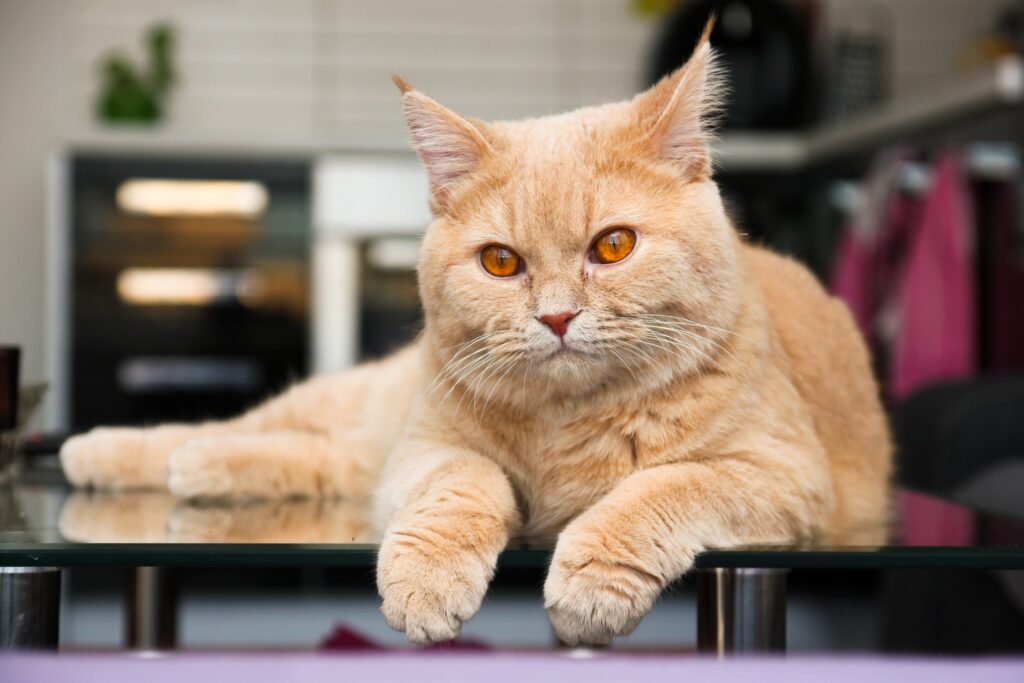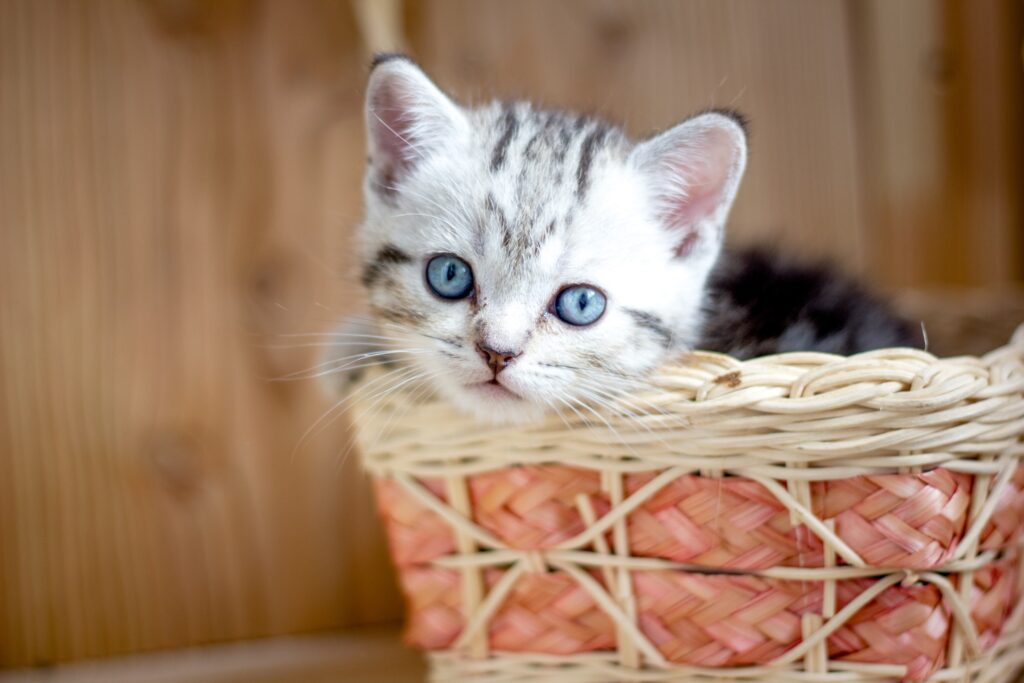Have you ever wondered just how many lives your cat actually has? While the old saying goes that cats have nine lives, the truth is a bit more down-to-earth. Sadly, at some point we all will need to say goodbye to our fur babies.
How much time can we expect to have with them before then? How long do house cats actually live?
As a cat lover myself, I know you want your kitty companion around for as many years as possible. And the good news? With proper care, your house cat can stick by your side for a good long time – we’re talking well over a decade!
Average Lifespan of a House Cat
Depending on where you look, reports on the lifespan of cats range anywhere from 10 years up to 20 years. For a more specific number, we can look at a recent study of 8,000 cats in the UK which found that, overall, the average life expectancy of cats that received veterinary care was just under 12 years.
Factors That Impact Lifespan
While the average life expectancy is around 12 years, the range is very wide, with some cats living much, much longer than that. Diet choices, healthcare routines, and whether it’s an indoor or outdoor kitty all play big roles in this. Let’s look at some of these factors a little closer.

Indoor vs Outdoor Cats
One of the biggest factors that impact a cat’s life expectancy is whether they live indoors or outdoors.
Assuming that the above study involved mostly indoor cats (the authors didn’t specify, but it’s a reasonable assumption), this puts the life expectancy of indoor cats at 12 years – much longer than the average lifespan of 2-5 years for cats that spend most of their time outside .
When cats roam outside, they risk accidents with vehicles, exposure to illnesses and encounters with predators that can kill them. Indoor cats, on the other hand, are protected from these dangers and often receive better health care from their owners.
Other Factors That Impact Lifespan
Aside from living environment, other factors that can influence how long a cat will live include:
- Diet: A healthy, balanced diet can help prevent health issues and extend a cat’s lifespan.
- Spaying/Neutering: This not only prevents unwanted litters but also increases lifespan by protecting against certain reproductive diseases and reducing behaviors that increase risk of injury or death such as wandering or fighting.
- Healthcare: Regular check-ups, vaccinations, and preventive care all protect your cat’s health, meaning it can live a longer life.
- Genetics: Some cat breeds tend to have longer lifespans than others.

Average Lifespan by Breed
Different cat breeds will have different lifespans due to a combination of genetic factors, inherent health conditions, and breed-specific susceptibilities to certain diseases.
For instance, mixed-breed cats often enjoy a longer lifespan compared to purebred cats, likely due to their diverse gene pool, which can offer some protection against breed-specific ailments.
And some breeds such as the Persian are more prone to hereditary health issues like heart disease or respiratory problems, which can shorten their expected lifespan.
When the scientists looked at the data on the 8,000 cats in the UK, they found startling differences in how long various breeds tend to live.
The longest lived breed, the Burmese cat, can be expected to live on average over 14 years, while the shortest lived breed, the Sphynx, has an average lifespan of under seven years – less than half the number of years the Burmese will live.
You can imagine my dismay when I found BOTH of my own cats (Bengal and Sphynx) at the very bottom of this list!
Here is the list of life expectancy by breed:
| BREED | LIFE EXPECTANCY (YEARS) |
|---|---|
| Burmese | 14.4 |
| Birman | 14.4 |
| Crossbred | 11.9 |
| Siamese | 11.7 |
| Persian | 10.9 |
| Ragdoll | 10.3 |
| Norwegian Forest Cat | 10.0 |
| Maine Coon | 9.7 |
| Russian cats | 9.7 |
| British cats | 9.6 |
| Bengal | 8.5 |
| Sphynx | 6.7 |
How to Help Your Cat Live a Long and Healthy Life
Whatever breed your cat is, there are many things you can do to help make sure that they live a long, healthy life. Here are some tips I’ve learned over the years:
Regular Vet Check-ups
Don’t skip those annual vet visits. Regular check-ups can catch health problems early and prevent them from becoming more serious.
Proper Nutrition
A proper diet is fundamental to a cat’s health and longevity. Feed them a balanced diet that meets their age, health status, and activity level requirements. High-quality cat food brands often specify detailed nutritional content on their packages, so be sure to read the labels.
For a diet that’s right on target, consult with your vet about creating a customized feeding plan that suits your cat’s specific requirements.
Don’t forget to keep a ready supply of fresh water out for them. Proper hydration is particularly important for preventing urinary tract issues, such as infection, bladder stones or crystals, and blockages..

Exercise and Mental Stimulation
Cats may seem like lazy loungers but, just like their owners, they still need exercise and mental stimulation.
Keep your cat active by providing a variety of toys. Include several scratching posts for climbing and claw stretching, and make time for daily play sessions to bond and stimulate your cat. For added mental engagement and fun, consider using puzzle feeders. These feeders not only entertain your cat but also cater to its natural hunting instincts.
Engaging in playtime with your cat not only keeps them physically fit but also provides essential mental stimulation. Occasionally when my Bengal gets the zoomies, I encourage her and join in the “chase and be chased” game. Admittedly, I don’t last nearly as long as her, but she enjoys the game until I get tired!
Comfortable and Safe Living Environment
Just like people, cats want and need to be safe and comfortable in their homes. Keep your living space hazard-free: remove poisonous plants, tiny items pets might swallow, and any exposed electrical cords.
Make sure your cat has a cozy, quiet space retreat and rest, away from the hustle and bustle of daily activities.
Don’t forget to keep a clean litter box and scoop it daily. By keeping up with your cat’s litter box cleaning, you’ll notice changes in their bathroom patterns right away and can address potential health concerns before they become serious problems.
Keep Up with Vaccinations and Preventive Care
Taking preventative measures to protect your cat from common diseases and health problems is always better than dealing with them after they occur. Keep up-to-date with vaccinations and preventive care such as deworming and flea and tick medication as recommended by your veterinarian.
It might look like more hassle and expense at first glance, yet these measures are beneficial down the road.

Keeping Cats Indoors
While some cats love to explore the great outdoors, keeping them inside can significantly increase their lifespan.
Cats that stay indoors are protected from threats including moving vehicles, other potentially dangerous pets or wildlife in the neighborhood along with many types of disease exposure they might encounter outside.
If you feel your cat would benefit from outdoor exercise, train them to use a leash and harness so you can go on walks together, build them an outdoor catio or cat run, or “escape proof” your yard or garden area to keep them contained and under your direct supervision.
Of course, every cat is unique, and there’s no one-size-fits-all approach to feline care. Every cat has its own personality traits; recognize these differences by working closely with both observation and veterinary guidance on creating an effective personalized care plan.
Have Your Cat Spayed or Neutered
One of the most important things I always encourage pet owners to do is to spay or neuter their cats.
So why does spaying/neutering have such a dramatic effect on lifespan? By opting to spay or neuter your pet, you help prevent specific types of reproductive cancers—testicular for males and both ovarian and mammary for females—which keeps them healthier longer. These cancers can be aggressive and often fatal, so removing the risk altogether can add years to a cat’s life.
Additionally, spaying/neutering can reduce or eliminate certain behavioral issues that can lead to injuries or accidents. Unneutered male cats, for example, are more likely to roam and get into fights with other cats, increasing their risk of wounds, infections, and exposure to diseases like FIV and FeLV.
Female cats who aren’t spayed will go into heat multiple times a year, which can be stressful and lead to unwanted litters. The physical demands of pregnancy and nursing can also take a toll on a cat’s body over time.

Famous Felines Who Lived Exceptionally Long Lives
While the average house cat lives around 12 years, there have been some truly remarkable felines who have defied the odds and lived well into their 30s and even beyond.
One of the most famous examples is Creme Puff, a mixed tabby domestic cat from Austin, Texas who holds the record for the oldest cat ever. Born on August 3, 1967, Creme Puff lived an astonishing 38 years and 3 days before passing away on August 6, 2005.
According to her owner, Jake Perry, Creme Puff’s secret to longevity was a diet that included bacon and eggs, asparagus, broccoli, and coffee with heavy cream. While I’m not sure I’d recommend that exact diet for every cat, it clearly worked for Creme Puff.
Interestingly, Creme Puff wasn’t Perry’s only record-breaking cat. He was also the owner of Granpa Rexs Allen, a Sphynx/Devon Rex mix who lived to be 34 years old, making him the world’s oldest living cat at the time of his death in 1998.
Conclusion
So, there you have it – the inside scoop on how long house cats live. While the average lifespan of house cats hovers around 12 years, numerous factors can influence how long your feline friend may live.
From breed-specific tendencies to lifestyle choices like keeping them indoors, each element plays an important role in extending your cat’s life.
Remember, while genetics and breed characteristics can set a baseline, the care and environment you provide for your cat are also determinants of their overall health and longevity.
[Image credits: All images are used under license or with permission]

